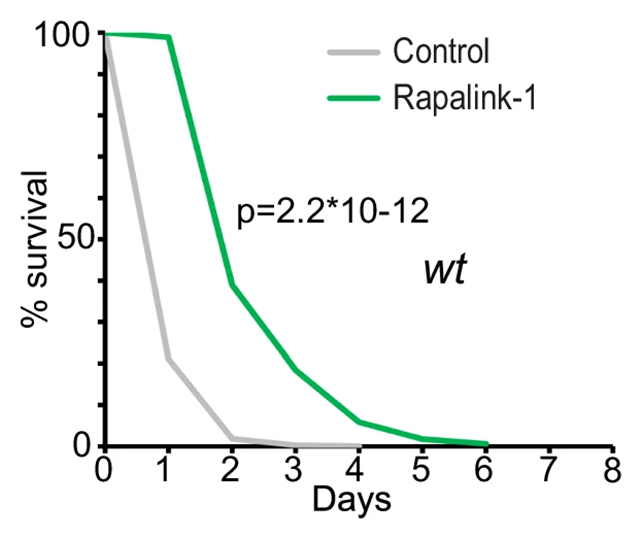Scientists continue to explore ways we can live longer and ensure those lives are healthier. A new discovery of note in this field comes from experiments in fission yeast (an organism often used for studies of aging).
Researchers from Queen Mary University of London have been testing a new drug called Rapalink-1, building on an existing immunosuppressant called rapamycin that has been shown to extend the life of cells and rodents. In these new tests, Rapalink-1 extended yeast lifespan to a similar degree as rapamycin.
What’s more, molecular analysis revealed that the drug increased the production of enzymes that convert a compound made by gut bacteria, called agmatine, into a variety of other chemicals.
Related: Switching Off One Crucial Protein Appears to Reverse Brain Aging in Mice
Previous studies suggest agmatine can extend the lifespan of the microbes’ host. Tests now reveal the conversion of the compound also indirectly affects genes linked to aging, which is part of the reason that Rapalink-1 was effective.
While the science is quite technical, the takeaway is significant: It gives scientists a clearer indication of how yeast cells can be made to live longer, through a method that may apply to human cells.
“By showing that agmatinases are essential for healthy aging, we’ve uncovered a new layer of metabolic control over TOR – one that may be conserved in humans,” says cellular biologist Charalampos Rallis.
“Because agmatine is produced by diet and gut microbes, this work may help explain how nutrition and the microbiome influence aging.”

Both Rapalink-1 and rapamycin work through a biological pathway called the Target of Rapamycin, or TOR. This pathway is well known for its links to cell aging and disease, first established in yeast, roundworms, flies, and mice. There’s a similar pathway in humans too.
Another important finding from the new study was that Rapalink-1 worked through TORC1, the part of the TOR pathway responsible for cell growth. Rapalink-1 puts the brakes on TORC1, which means cells grow more slowly, but last longer.
“Understanding how TORC1 activity is tuned may be beneficial in both normal aging and also pathological states as well as in cancer where TOR plays important roles,” the researchers write in their paper.
While you shouldn’t expect a miracle longevity tablet to arrive on the market anytime soon, these discoveries give us a better understanding of aging as an incredibly complex process that sees our bodies slowly break down and run out of steam as the years go by.
That wearing down of our bodies increases the risk of a multitude of diseases, from Alzheimer’s to arthritis, and eventually, drugs like Rapalink-1 might keep some of those conditions at bay for longer. Rapalink-1 is already being trialed as a way of fighting cancer tumors and improving transplant outcomes.
However, the researchers emphasize that this work is still at an early stage, and that agmatine supplements – which are sold as promoting good health based on earlier studies – should still be approached carefully.
“We should be cautious about consuming agmatine for growth or longevity purposes,” says Rallis. “Our data indicates the agmatine supplementation can be beneficial for growth only when certain metabolic pathways related to arginine breakdown are intact.”
“In addition, agmatine does not always promote beneficial effects as it can contribute to certain pathologies.”
The research has been published in Communications Biology.
Source link
